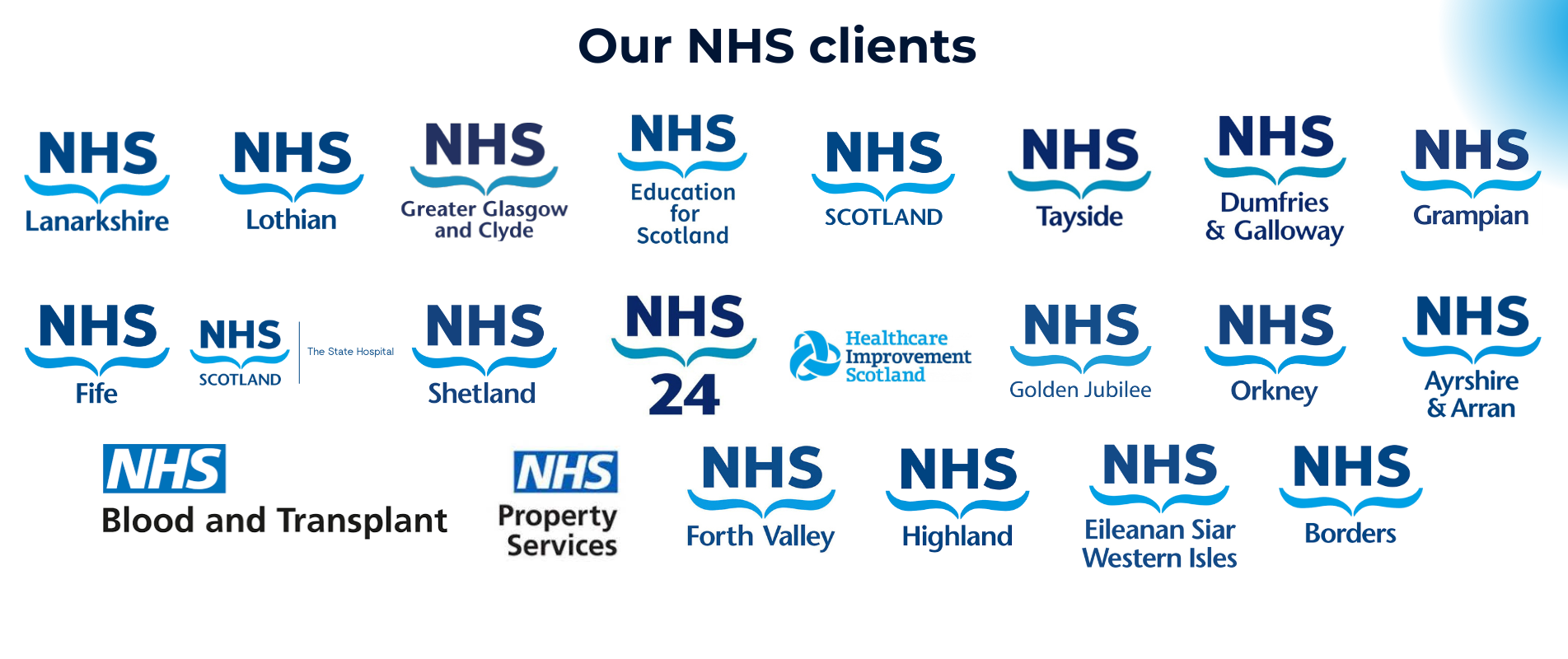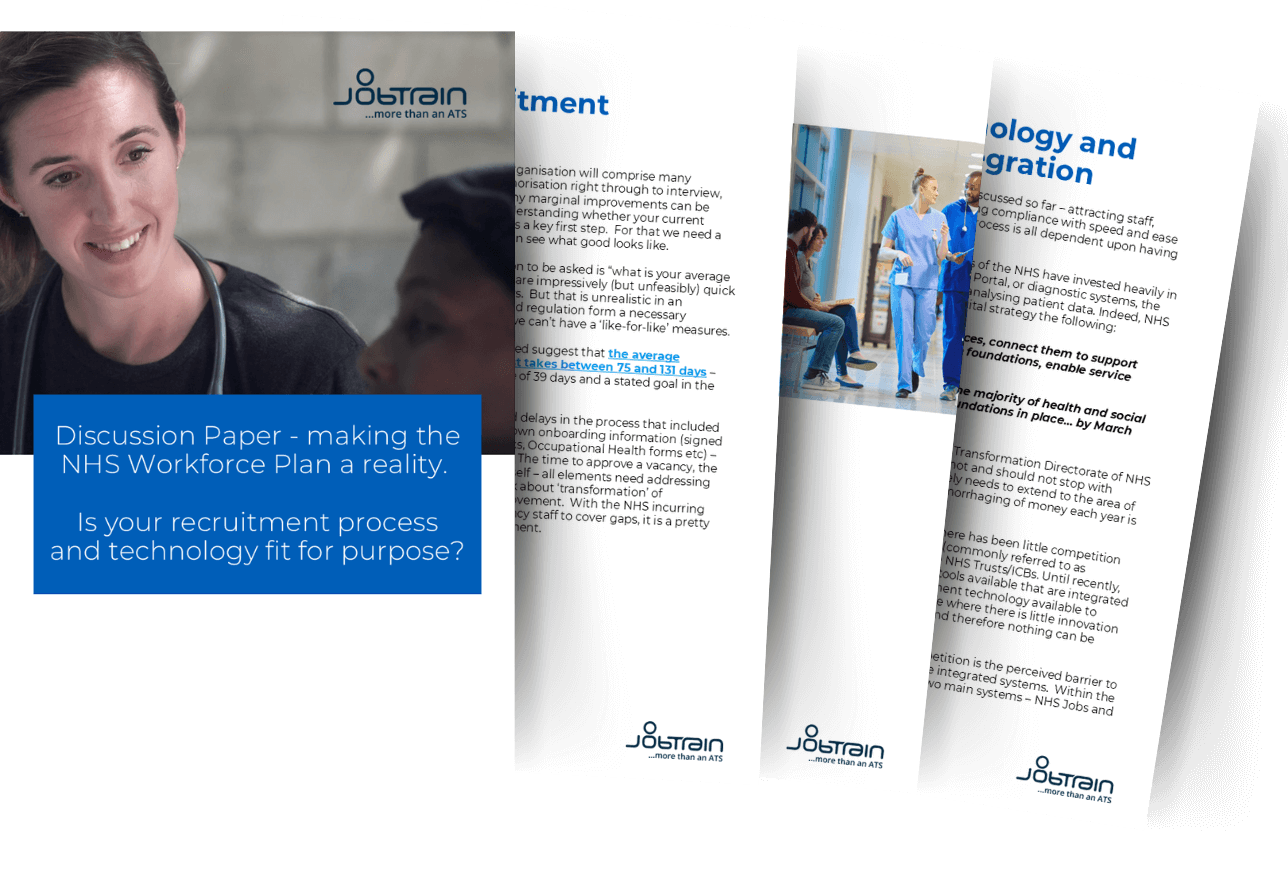1 - The mission of NHS Blood and Transplant
2 - Why transform NHS recruitment?
3 - The 'Candidate First' strategy
4 - High-volume recruitment challenges
5 - Audience questions
The NHS, a cornerstone of healthcare in the UK, faces numerous challenges in recruitment. Recently, our own Giles Heckstall-Smith sat down with Ruth Saunders, Assistant Director of Talent Acquisition and Recruitment at NHS Blood and Transplant (NHSBT) to shed light on their ongoing transformation in NHS recruitment, supported by the Jobtrain ATS.
The mission of NHSBT
NHSBT is a national organisation with a workforce of over 6,000. Its mission is to "save and improve lives" by delivering blood and blood-based therapies across England and organs and tissue transplantation services across the UK.
"We deliver 1.4 million units of red blood cells, 250,000 units of platelets, and 200,000 plasma components to 260 hospitals," Ruth elaborated.
Why transform NHS recruitment?
According to Ruth, the traditional recruitment process within NHSBT was "very transactional" and followed a "one-size-fits-most" approach. "The market has changed rapidly, especially post-pandemic. There was a need to reinvent "how we attract talent", she explained. This transformation is part of the organisation's broader strategy and is supported at the board level.
The Workforce Plan published in June 2023 highlighted some key measurements that the NHS will be focussing on in its effort to upscale its recruitment, such as time-to-hire. To meet the outcomes of that plan, change is needed.
We wrote all about how too make the workforce plan a reality in our own discussion paper - Making the NHS Workforce Plan a reality.
The 'Candidate First' strategy in NHS recruitment
One of Ruth's initial steps was to consult with hiring managers, leaders, and trade union colleagues to understand the challenges and opportunities. "We focused on securing the foundations for the first 12 to 18 months. This involved looking at technology, data and brand presentation" Ruth said. The central theme of NHSBT's new recruitment strategy is to put the candidate at the heart of everything. "In this market, that's where you win or lose," Ruth emphasised.
.png?width=1920&height=1080&name=Untitled%20design%20(6).png) Expanding on the 'Candidate First' strategy, Ruth pointed out that candidates today have different expectations. "Candidates are used to shopping online, doing one or two clicks to do things. We need to get enough information from candidates that's relevant and that candidates are happy to give when they've got many other opportunities that could be of interest to them," she explained.
Expanding on the 'Candidate First' strategy, Ruth pointed out that candidates today have different expectations. "Candidates are used to shopping online, doing one or two clicks to do things. We need to get enough information from candidates that's relevant and that candidates are happy to give when they've got many other opportunities that could be of interest to them," she explained.
The focus is on streamlining the application process and making it as user-friendly as possible while still gathering the necessary information to make informed hiring decisions.
"There is an opportunity to reduce the length of the application form. We're focusing on what information we need and when we need it" she said.
High-volume recruitment challenges
NHSBT faces high-volume recruitment for roles like healthcare assistants and donor carers. Ruth revealed an interesting challenge: "The term 'donor carer' was not commonly searched for because it's unique to NHSBT". After conducting A/B testing with the job title "Healthcare Assistant for Donation," they noticed a significant increase in the number of applicants.
Ruth went on to discuss the complexities of high-volume recruitment. "What's challenging about the role is that it doesn't really matter what your background is, so long as you've got great customer service skills," she said. The organisation is working on differentiating candidates and helping hiring managers with shortlisting.
"We're working on how we simplify that process. We're looking at some further automations in the future to automate that process through so that fundamentally we can be quicker, get better-matched candidates through the process and take some of the heavy lifting away from the hiring managers," Ruth elaborated.
Audience questions
Towards the end of the webinar, Giles and Ruth took a couple of questions from the audience.
90% of NHS organisations use Trac as their ATS, what system do you use?
"NHSBT uses Jobtrain," Ruth said. "It's been a key part of our recruitment transformation journey."
Giles went on to elaborate on how we view our work with NHS Trusts. "Most Trusts will use NHS Jobs or Trac. At Jobtrain, we've been supporting the whole of NHS Scotland - all 22 boards - for over 5 years now and have recently been adding more NHS organisations and trusts to our client base. We now offer an ATS for NHS England Trusts.
Critically, I think one of the reasons Trac has been so successful is because it can integrate with NHS Jobs and ESR. Jobtrain can now do both of those too and it's all part of the base price. We've started to see a shift from recruiters who want to look at reporting in a bit more detail and focus on wider recruitment as a whole."
 How many people are in the overall NHSBT recruitment team?
How many people are in the overall NHSBT recruitment team?
There are 20 people in the NHSBT recruitment team.
One of our biggest challenges is our hiring managers. How have you got around some of those challenges of resistance to change?
"This is a tough one," Ruth said. "There's so much work to do, there's so much to deliver, there are so many conflicting priorities for recruitment teams. There's no magic wand, but every interaction that we have with hiring managers is looking for opportunities to look at what your process at the beginning of every vacancy looks like. It can be quite illuminating for hiring managers."
We have created a guide on how to create successful partnerships with hiring managers - download a free copy here.
How is NHSBT differentiating itself from competitors?
Ruth mentioned that they are working on their Employer Value Proposition (EVP) and are in the process of rolling out a new brand and career site. "We're trying to be a bit more deliberate and a bit more data-driven about how we go and attract candidates to our organisation" she added.
Conclusion
The transformation of NHS recruitment spearheaded by NHS Blood and Transplant is nothing short of revolutionary. Under the insightful leadership of Ruth and her team, the organisation is setting new benchmarks in recruitment strategies, not just for itself but potentially for the NHS as a whole. By adopting a candidate-centric approach, leveraging cutting-edge technology, and focusing on data-driven decision-making, NHSBT is succeeding in attracting top-tier talent who align with its noble mission of saving and improving lives.
Ruth's concluding remarks encapsulate the essence of this transformation: "Recruitment transformation is within our strategy, and it's a real ambition of the organisation to make some changes." These aren't just words; they are backed by actionable strategies and measurable outcomes. The organisation's commitment to revamping its recruitment process is evident in the results they've achieved so far and they continue to strive for excellence.
